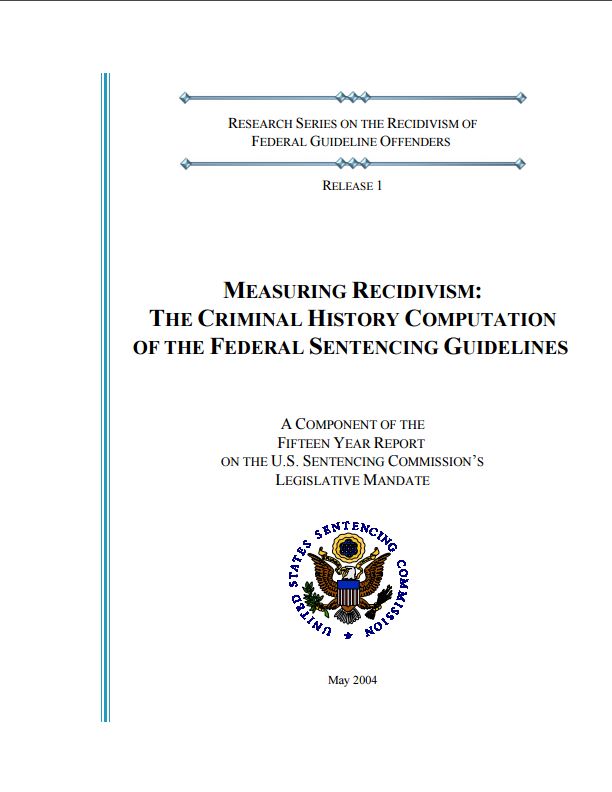Summary

The study uses pre-conviction and instant offense information for a sample of guideline federal offenders sentenced in fiscal year 1992, matched with their post-sentencing criminal behavior collected from FBI records. The current study examines in detail the predictive statistical power of the criminal history measure, responds to the Sentencing Commission’s initial intentions, fills the void of empirical evidence about the criminal history measure, and addresses current criticisms of the CHC. Both tabular and statistical models of recidivism outcomes report findings by criminal history category and point groupings, as well as by offender demographics, instant offense characteristics, and recidivating offense types. (May 2004)
Key Findings
Based on the Commission's analysis the following observations were made:
- Both CHCs and criminal history points predict recidivism, regardless of whether recidivism is measured with the primary definition or by a re-conviction only definition.
- The most predictive result occurs when criminal history points are the measure used to predict the primary recidivism measure. The AUC for this combination is the highest, at 0.6979. This finding confirms the expectation that the criminal history points measure represents the most accurate predictive instrument.
